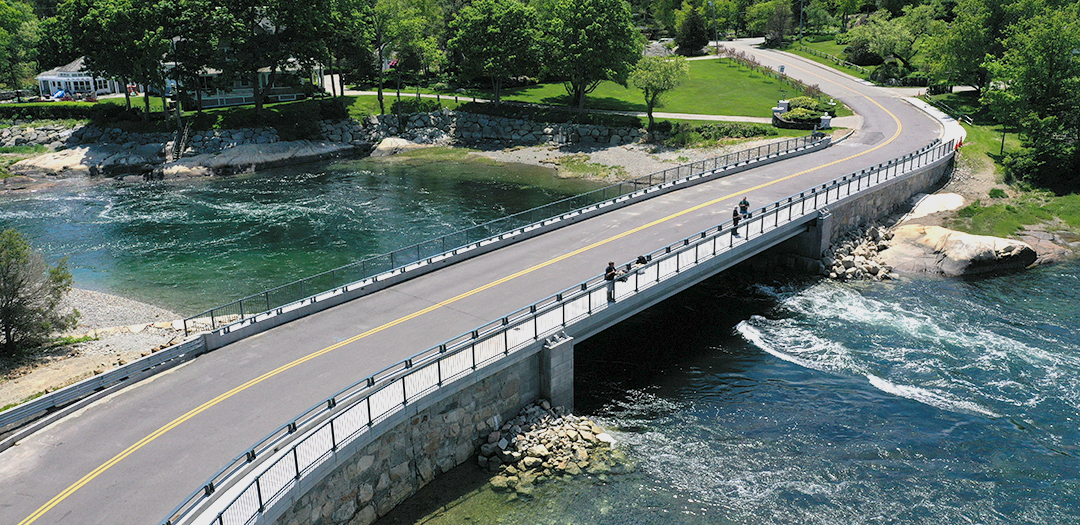Atlantic Avenue over Little Harbor Inlet Bridge Replacement
Cohasset, Massachusetts
Located along a scenic section of Cohasset’s coastline, the design of the replacement bridge carrying Atlantic Avenue over Little Harbor Inlet presented several challenges in order to make it more resilient than its predecessor.
Spanning over the narrow “cut” into Little Harbor, the new bridge abutments are subjected to significant water flow and high velocities due to the daily tide cycles. The abutments were designed with an innovative technique that combined precast and cast-in-place concrete construction. The abutment face was built using precast concrete panels cast integrally with a granite veneer. These panels were then set in place and used as one side of the formwork for the concrete that was placed behind the panels to create the abutment stems. This method securely anchored the granite to the abutment face and minimized the number joints between panels.
Bedrock at the project site is relatively shallow and its surface sloping steeply off at the south abutment. This, coupled with the need to excavate and dewater within cofferdams encompassing the abutments and wingwalls, with the ever-changing tides, presented further challenges to properly support the bridge. Excavation was undertaken in the wet and tremie concrete placed to level off the bedrock. To further anchor the bridge, the tremie concrete was anchored to the underlying bedrock using rock anchors.
The wingwalls were also designed using cast-in-place concrete faced with a thick stone veneer using oversized dovetail anchors. The wingwall veneer consisted of stones from the original bridge wingwalls cut to a thickness of 18 inches. The main girders of the replacement bridge are comprised of high strength, precast concrete, New England Bulb Tee girders. These concrete girders are much more robust and more appropriate for use in such a harsh marine environment, as compared to the bridge’s original steel beams.




